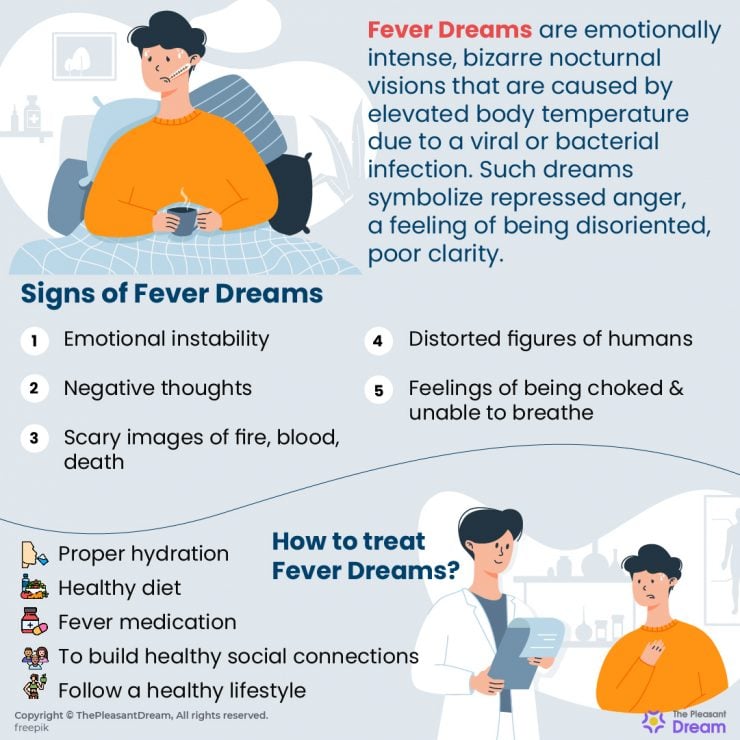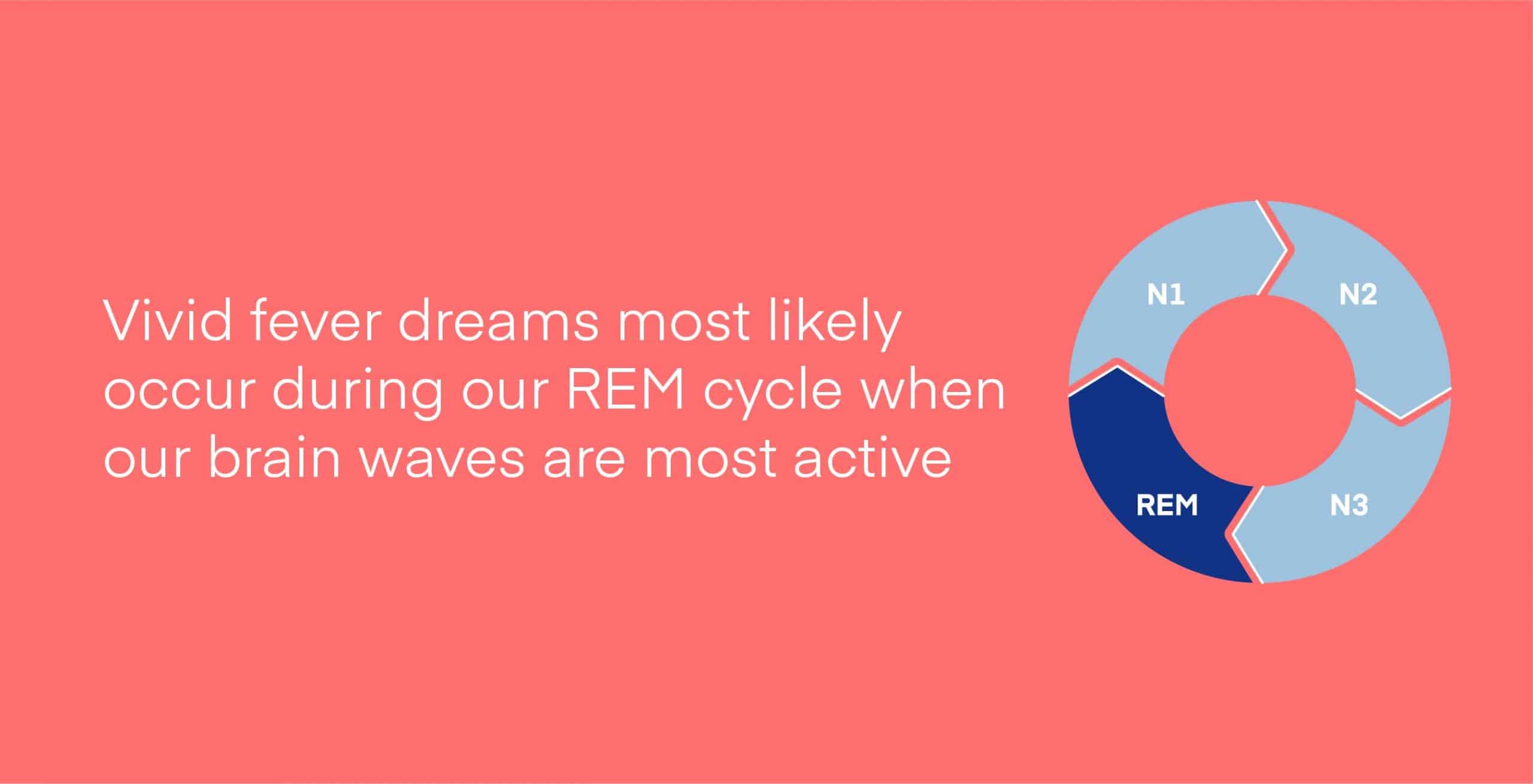Dream vs. Fever

Dream vs fever prediction – Dreams and fevers are two distinct physiological and psychological experiences that share some similarities but differ in their underlying mechanisms and subjective experiences.
Dreams and fevers, both ethereal realms where reality blurs. Like a hazy mirage, a dream’s prophecy dances before us, a whisper from a distant shore. But can we truly discern the fever’s grasp from the dream’s gentle embrace? Explore the enigmatic dance between dreams and fevers, where visions intertwine and the line between prophecy and illusion blurs.
Dream vs fever , a tale as old as time, unfolds before us, a mystery waiting to be unraveled.
Characteristics and Differences
The following table Artikels the key characteristics of dreams and fevers:
| Characteristic | Dream | Fever |
|---|---|---|
| Physiological Mechanism | Occurs during REM sleep | Elevated body temperature |
| Psychological Mechanism | Unconscious mental activity | Response to infection or illness |
| Subjective Experience | Vivid, often bizarre imagery | Hallucinations, delirium, and confusion |
| Duration | Typically last for a few minutes | Can last for several hours or days |
| Purpose | Unclear | Defense mechanism against infection |
Dreams are a normal part of the sleep cycle and are thought to play a role in memory consolidation and emotional processing. Fevers, on the other hand, are a symptom of an underlying infection or illness and serve as a defense mechanism to fight off the infection.
The difference between a dream and a fever prediction is as clear as the florida panthers score. A dream is a desire that takes flight, while a fever prediction is a warning that seeks to anchor us. Both have their place in our lives, but it is up to us to decide which one we will follow.
Subjective Experiences
The subjective experiences of dreams and fevers can vary greatly from person to person. Dreams are often characterized by vivid, often bizarre imagery, and can range from pleasant to frightening. Fevers, on the other hand, can cause hallucinations, delirium, and confusion, and are often accompanied by feelings of discomfort and illness.
Impact on Cognition and Behavior

Fevers and dreams, while distinct phenomena, can exert profound effects on our cognitive abilities and behavior. Fevers are characterized by elevated body temperatures, triggering physiological responses that can impact brain function. Dreams, on the other hand, occur during sleep and involve vivid mental experiences.
Both fevers and dreams can lead to cognitive impairments, though the nature of these impairments differs. Fevers can cause delirium, a state of confusion and disorientation accompanied by hallucinations. Delirium is often transient and resolves as the fever subsides. Dreams, while not typically associated with delirium, can disrupt memory consolidation, the process by which short-term memories are transformed into long-term memories. This disruption can lead to difficulty recalling events and experiences after waking.
Dreams and Emotional Processing
Dreams also play a role in emotional processing. The vivid and often bizarre imagery of dreams can provide a safe space for individuals to explore and process their emotions. Dreams can help us to identify and understand our fears, desires, and anxieties. By allowing us to confront these emotions in a controlled environment, dreams can contribute to our emotional well-being.
Impact on Decision-Making and Problem-Solving, Dream vs fever prediction
Fevers and dreams can also affect decision-making and problem-solving abilities. Fevers can impair cognitive functions such as attention, concentration, and judgment, leading to poor decision-making. Dreams, on the other hand, can provide insights and creative solutions to problems. The subconscious mind is often free to explore novel ideas and perspectives during dreams, which can lead to innovative solutions upon waking.
Diagnosis and Treatment: Dream Vs Fever Prediction

Diagnosing dreams and fevers involves a combination of clinical examination, medical history, and laboratory tests. Dreams are typically diagnosed based on the patient’s description of their experiences during sleep, while fevers are diagnosed based on a measurement of body temperature above normal.
Treatment options for fevers vary depending on the underlying cause. Common treatments include rest, fluids, and over-the-counter medications such as ibuprofen or acetaminophen. In some cases, antibiotics or antiviral medications may be necessary.
Dream Interpretation in Therapeutic Interventions
Dream interpretation has been used as a therapeutic tool for centuries. By exploring the symbols and themes present in dreams, therapists can help patients gain insight into their unconscious thoughts and feelings. This can lead to a deeper understanding of oneself and one’s life experiences.
In the realm of dreams and fevers, the lines between reality and fantasy often blur. Just as anthony stolarz ‘s saves dance between brilliance and the surreal, so too do our dreams and fevers weave their own tapestry of truth and illusion.
Whether it’s the adrenaline-fueled anticipation of a dream fulfilled or the feverish delirium of a nightmare, these realms offer glimpses into the depths of our souls.
In the realm of dreams and fevered visions, the line between reality and imagination blurs. Dreams, like Jonquel Jones , the basketball star, can soar high above the clouds, while fevers cast a hazy veil over our perceptions. Both dreams and fevers can hold glimpses of truth, yet it is often difficult to discern which is which.
When the boundaries between dreams and fever predictions blur, we find ourselves at a crossroads. Like the passionate fans of florida gators baseball , who live and breathe the game, we seek to decipher the signs that guide our destiny.
Yet, as the fever subsides, we must confront the reality that dreams, like the ebb and flow of a baseball game, can both elate and disappoint.